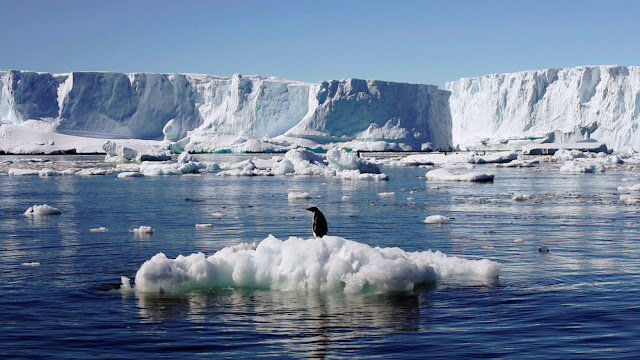 |
| Melting ice on the coast of Adélie Land in East Antarctica. REUTERS/Pauline Askin |
East Antarctica is the coldest spot on earth, long thought to be untouched by warming. But now the glaciers and ice shelves in this frigid region are showing signs of melting, a development that portends dramatic rises in sea levels this century and beyond.
Now, however, parts of the East Antarctic are melting.
Research into what’s happening in East Antarctica is still in its early stages. It’s hard to decipher what exactly is taking place on a gigantic continent of ice with just a few decades of satellite data and limited actual measurements of things like snowfall and ocean temperatures. But according to one controversial paper released earlier this year, East Antarctica is now, in fact, shrinking, and is already responsible for 20 percent of the continent’s ice loss.
For decades, researchers considered this portion of the continent to be stable. While warming sea and air temperatures have caused ice shelves and glaciers in the lower-altitude, warmer western regions of the Antarctic to melt and collapse, the larger, colder East had seemed an untouchable behemoth. If anything, climate change was expected to bring more snow to its interior, making its ice sheets grow in size.
A melting East Antarctic is deeply worrying. The Antarctic as a whole contains about 90 percent of the planet’s ice — enough in theory to raise global sea levels an average of roughly 200 feet should it all melt. The eastern half is the big player in this game: it holds 10 times more ice than the West — enough, on its own, to raise sea levels by 170 feet.
The full force of a melting Antarctic might not be felt for many thousands of years, but the continent could add a foot to sea level by 2100, says University of Massachusetts, Amherst geoscientist Robert DeConto, and possibly more than 3 feet by the mid-22nd century. Combined with melting mountain glaciers, the thawing Greenland Ice Sheet, and the expansion of water as it gets warmer, global sea levels could rise as much as 6 feet by the end of this century, swamping low-lying islands as well as large sections of coastline in places like Florida.
Read more at Yale

